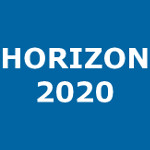Precise 113Cd ß decay spectral shape measurement and interpretation in terms of possible gA quenching
Bandac, I. ; Bergé, L. ; Calvo-Mozota, J. M. ; Carniti, P. ; Chapellier, M. ; Danevich, F. A. ; Dixon, T. ; Dumoulin, L. ; Ferri, F. ; Giuliani, A. ; Gotti, C. ; Gras, Ph. ; Helis, D. L. ; Imbert, L. ; Khalife, H. ; Kobychev, V. V. ; Kostensalo, J. ; Loaiza, P. ; de Marcillac, P. ; Marnieros, S. ; Marrache-Kikuchi, C. A. ; Martinez, M. (Universidad de Zaragoza) ; Nones, C. ; Olivieri, E. ; de Solórzano, A. Ortiz [...] Mostrar todos los autores (32)
Resumen: Highly forbidden β decays provide a sensitive test to nuclear models in a regime in which the decay goes through high spin-multipole states, similar to the neutrinoless double-β decay process. There are only 3 nuclei (50V, 113Cd, 115In) which undergo a 4th forbidden non-unique β decay. In this work, we compare the experimental 113Cd spectrum to theoretical spectral shapes in the framework of the spectrumshape method. We measured with high precision, with the lowest energy threshold and the best energy resolution ever, the β spectrum of 113Cd embedded in a 0.43 kg CdWO4 crystal, operated over 26 days as a bolometer at low temperature in the Canfranc underground laboratory (Spain). We performed a Bayesian fit of the experimental data to three nuclear models (IBFM-2, MQPM and NSM) allowing the reconstruction of the spectral shape as well as the half-life. The fit has two free parameters, one of which is the effective weak axial-vector coupling constant, geffA , which resulted in geffA between 1.0 and 1.2, compatible with a possible quenching. Based on the fit, we measured the half-life of the 113Cd β decay including systematic uncertainties as 7.73+0.60−0.57 ×1015 yr, in agreement with the previous experiments. These results represent a significant step towards a better understanding of low-energy nuclear processes.
Idioma: Inglés
DOI: 10.1140/epjc/s10052-024-13538-3
Año: 2024
Publicado en: The European Physical Journal C 84, 11 (2024), 1158 [12 pp.]
ISSN: 1434-6044
Financiación: info:eu-repo/grantAgreement/EC/H2020/742345/EU/Cryogenic Rare-event Observatory with Surface Sensitivity/CROSS
Tipo y forma: Artículo (Versión definitiva)
Área (Departamento): Área Física Atóm.Molec.y Nucl. (Dpto. Física Teórica)
 Debe reconocer adecuadamente la autoría, proporcionar un enlace a la licencia e indicar si se han realizado cambios. Puede hacerlo de cualquier manera razonable, pero no de una manera que sugiera que tiene el apoyo del licenciador o lo recibe por el uso que hace.
Debe reconocer adecuadamente la autoría, proporcionar un enlace a la licencia e indicar si se han realizado cambios. Puede hacerlo de cualquier manera razonable, pero no de una manera que sugiera que tiene el apoyo del licenciador o lo recibe por el uso que hace.
Exportado de SIDERAL (2024-12-16-11:28:41)
Visitas y descargas
Idioma: Inglés
DOI: 10.1140/epjc/s10052-024-13538-3
Año: 2024
Publicado en: The European Physical Journal C 84, 11 (2024), 1158 [12 pp.]
ISSN: 1434-6044
Financiación: info:eu-repo/grantAgreement/EC/H2020/742345/EU/Cryogenic Rare-event Observatory with Surface Sensitivity/CROSS
Tipo y forma: Artículo (Versión definitiva)
Área (Departamento): Área Física Atóm.Molec.y Nucl. (Dpto. Física Teórica)
Exportado de SIDERAL (2024-12-16-11:28:41)
Enlace permanente:
Visitas y descargas
Este artículo se encuentra en las siguientes colecciones:
Artículos > Artículos por área > Física Atómica, Molecular y Nuclear
Registro creado el 2024-12-16, última modificación el 2024-12-16
